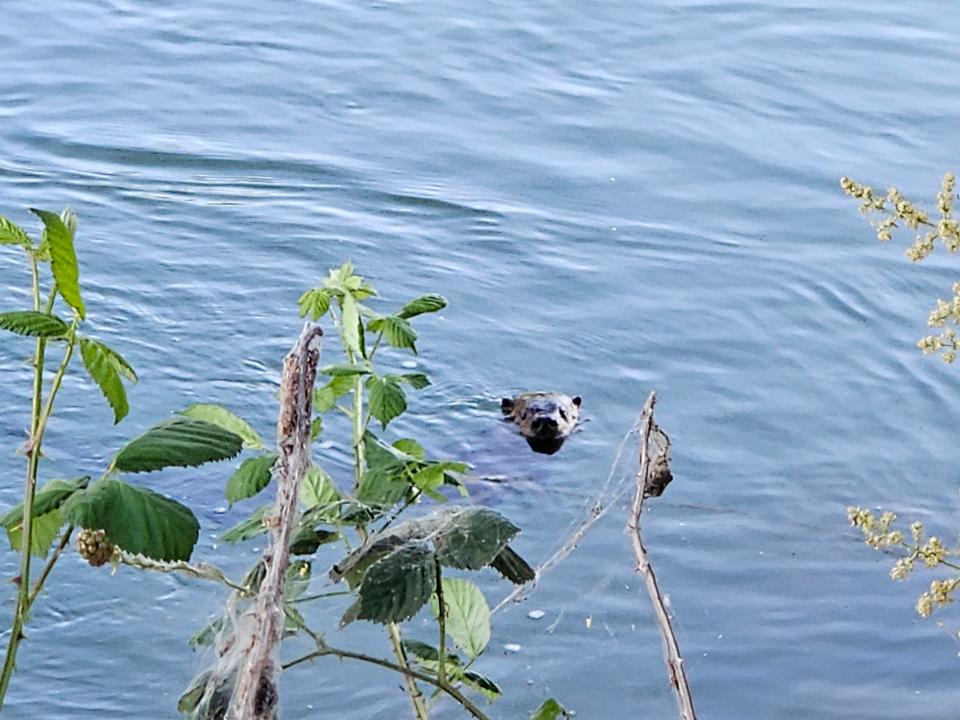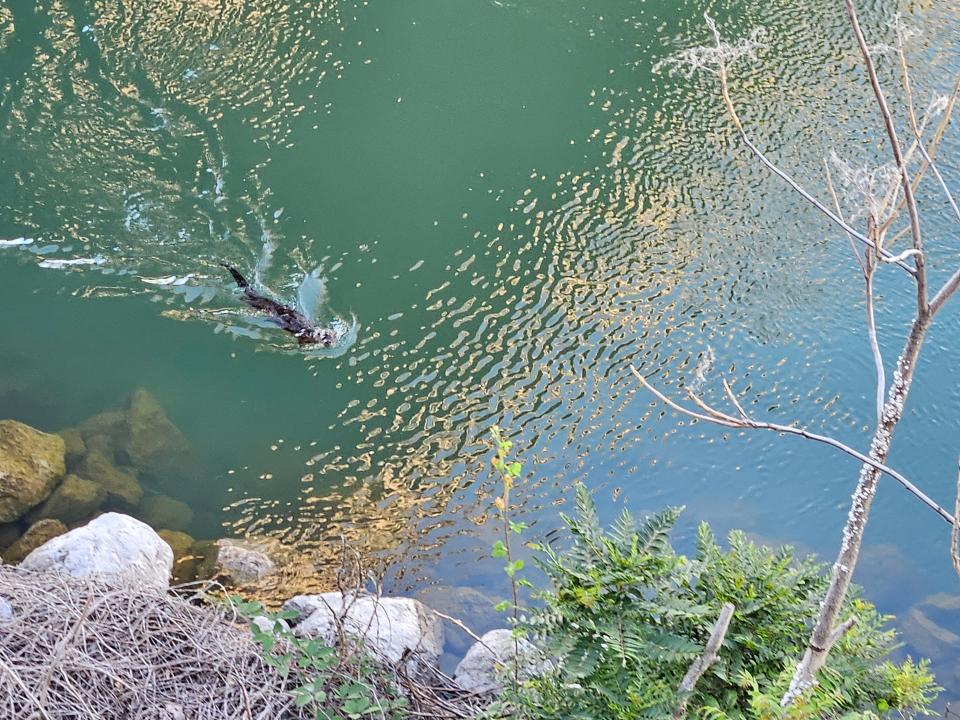Whiskeytown officials are urging visitors never to feed otters or geese and here's why
U.S. Fish and Wildlife Service scientists and local recreational park officials are asking people not feed or approach the North American river otters and Canada geese that swim in Whiskeytown Lake, Lake Shasta and the Sacramento River.
Whiskeytown National Recreation Area officials are blaming geese droppings for creating unsafe swimming conditions after large samples of E. coli bacteria were found in samples from Clear Creek six days ago.
Clear Creek is a popular swimming and fishing area. But the park's Canada goose population lives almost entirely on the human food visitors feed them and on the edible garbage that park visitors leave behind. Feeding wildlife at Whiskeytown is illegal and punishable by a $250 fine.
And those geese tend to leave something very undesirable behind: E. coli, a type of bacteria often found in animal and human feces, according to the U.S. Centers for Disease Control and Prevention. Since a single goose can defecate approximately one to three pounds per day, according to the recreation area's health advisory, “We have a goose problem at Whiskeytown," Superintendent Josh Hoines said.
Whiskeytown swim beach shutdown spotlights contamination sources
Bacteria can end up in beach sand and lakes after people, dogs or wildlife poop in or near the water, according to the U.S. Centers for Disease Control and Prevention. Even dirty diapers can contaminate sand and lake water, the agency said.

A sizeable population of North American river otters living in dens along the banks of the Sacramento river, said California Department of Fish and Wildlife unit biologist Jennifer Carlson.
The otters are "frequent swimmers" in the Sacramento River, where they're often seen year round, Carlson said.
So far this summer, interactions between with North American river otters and people have stayed low. "The (river otters) are seen foraging for fish, which is what their primary prey is," Carlson said.
But human run-ins with animals can happen if swimmers aren't aware of the danger wild animals present. That has prompted park officials to also ask people visiting the recreation area to steer clear of any North American river otters and Canada geese they see.
Note to readers: If you appreciate our effort to highlight critical issues in your community, please help power our local journalism. Subscribe to the Redding Record Searchlight.
In June 2020, a man was injured after he swam too close to a female otter's den, which contained three otter babies, at Manzanita Lake at Lassen Volcanic National Park, Superintendent Jim Richardson said.
Otter jaws are powerful and can generate 80 pounds of force when biting with their full strength, according to scientists from the Burke Museum on the University of Washington campus in Seattle.

"Usually they avoid people, but during pupping season when they are having their pups, they are more protective of their young," Carlson said. "They may approach people if they are protecting their young."
Feeding otters in the wild can also lead to the animals acting more aggressively towards humans, as a recent experience in the Bay Area shows.
Experts from the California Department of Fish and Wildlife were attempting to capture a sea otter at Cowell Beach in Santa Cruz after the animal started acting aggressively toward surfers, according a USA Today report on Wednesday morning.
The female sea otter had been born in captivity but was released into the wild and had begun showing aggressive behavior toward people as a result of being fed by humans, officials said.
Officials said there have been no confirmed reports of injuries caused by the sea otter in Santa Cruz.
Carlson said to avoid serious incidents involving otters and geese, visitors should "admire wildlife from a distance and don't get to close to and them to where you force an interaction between you and that animal. It could turn out to be a negative reaction and we don't want to see anyone get hurt or have to put down an animal as a result of potentially injuring a person."
To keep the area safe, Whiskeytown officials suggest visitors do not feed wildlife. They also ask people to dispose of trash properly, shower before swimming in the lake, keep babies and toddlers in protective swim diapers and ensure that adults use the park's restrooms, rather than polluting the water by using the lake.
Ethan Hanson started working for the Redding Record Searchlight after four years with the Los Angeles Daily News as a freelancer. His coverage includes working the NCAA Women's Basketball Tournament in South Bend, Indiana, and writing about the St. Louis Rams' move to Los Angeles with the Ventura County Star. He began his career as a play-by-play broadcaster for LA Pierce College from 2011-2017. Follow him on Twitter at @EthanAHanson_RS and ethan_a_hanson on Instagram. Help Record Searchlight journalism thrive by subscribing today!
This article originally appeared on Redding Record Searchlight: Feeding otters and geese at Whiskeytown poses risks and here's why

